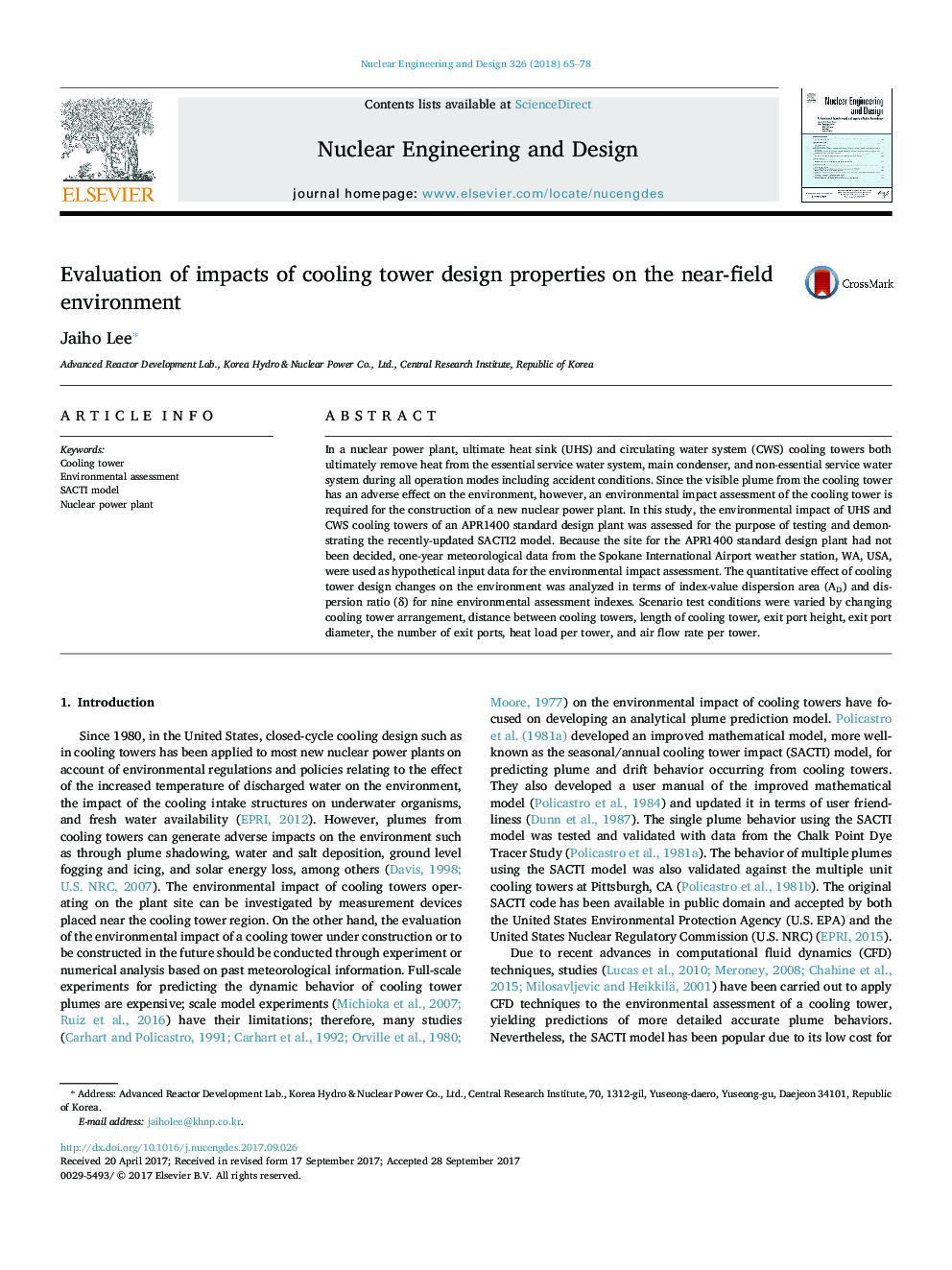| Article ID | Journal | Published Year | Pages | File Type |
|---|---|---|---|---|
| 6759702 | Nuclear Engineering and Design | 2018 | 14 Pages |
Abstract
In a nuclear power plant, ultimate heat sink (UHS) and circulating water system (CWS) cooling towers both ultimately remove heat from the essential service water system, main condenser, and non-essential service water system during all operation modes including accident conditions. Since the visible plume from the cooling tower has an adverse effect on the environment, however, an environmental impact assessment of the cooling tower is required for the construction of a new nuclear power plant. In this study, the environmental impact of UHS and CWS cooling towers of an APR1400 standard design plant was assessed for the purpose of testing and demonstrating the recently-updated SACTI2 model. Because the site for the APR1400 standard design plant had not been decided, one-year meteorological data from the Spokane International Airport weather station, WA, USA, were used as hypothetical input data for the environmental impact assessment. The quantitative effect of cooling tower design changes on the environment was analyzed in terms of index-value dispersion area (AD) and dispersion ratio (δ) for nine environmental assessment indexes. Scenario test conditions were varied by changing cooling tower arrangement, distance between cooling towers, length of cooling tower, exit port height, exit port diameter, the number of exit ports, heat load per tower, and air flow rate per tower.
Related Topics
Physical Sciences and Engineering
Energy
Energy Engineering and Power Technology
Authors
Jaiho Lee,
